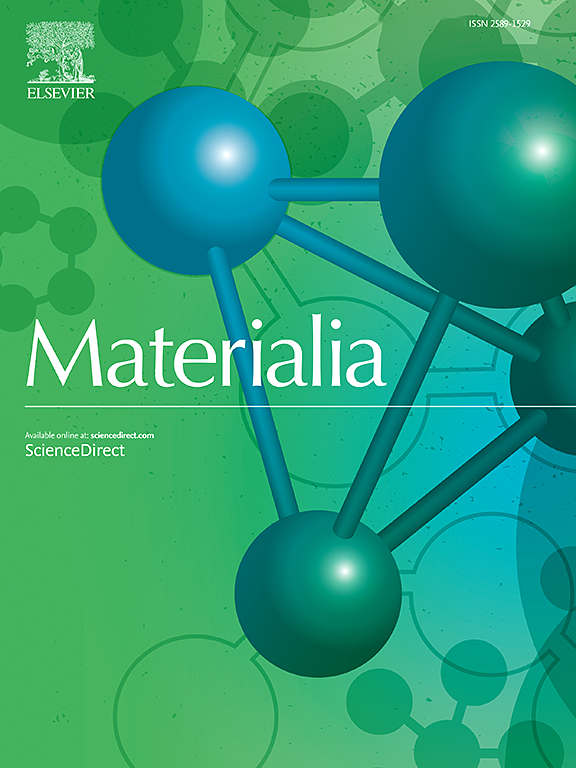Thermal analysis and Magnetic characterization of M-type SrFe12O19 nanodisks
IF 3
Q2 MATERIALS SCIENCE, MULTIDISCIPLINARY
引用次数: 0
Abstract
In the present work, the thermodynamic analysis and magnetic properties as a function of temperature were investigated using calorimetric and VSM measurements of SrFe12O19 nanodisks, which were obtained by a sonochemical-assisted method. The XRD analysis confirms the successful synthesis of single-phase SrFe12O19 powder (98 wt.%) at 2.4 W/cm3, with a disk-shaped morphology revealed by SEM analysis. The TGA/DSC measurements show five stages of mass loss in the range of 273–1073 K, which are identified as an oxidation process. The activation energy () was determined using mass loss identifications from the thermogram and the Coats-Redfern model. This model provides overall kinetic data, such as the Gibbs free energy (G), enthalpy (H), and entropy (S). In all cases, values of the S were negative, demonstrating that the composite has a more organized structure compared to the starting material. The SrFe12O19 single-phase material showed superparamagnetic behavior with a coercivity field of 0.56 kOe at 100 K and a saturation magnetization of 71.05 emu/g, which was determined using the Law of Approach to Saturation method.

求助全文
约1分钟内获得全文
求助全文
来源期刊

Materialia
MATERIALS SCIENCE, MULTIDISCIPLINARY-
CiteScore
6.40
自引率
2.90%
发文量
345
审稿时长
36 days
期刊介绍:
Materialia is a multidisciplinary journal of materials science and engineering that publishes original peer-reviewed research articles. Articles in Materialia advance the understanding of the relationship between processing, structure, property, and function of materials.
Materialia publishes full-length research articles, review articles, and letters (short communications). In addition to receiving direct submissions, Materialia also accepts transfers from Acta Materialia, Inc. partner journals. Materialia offers authors the choice to publish on an open access model (with author fee), or on a subscription model (with no author fee).
 求助内容:
求助内容: 应助结果提醒方式:
应助结果提醒方式:


